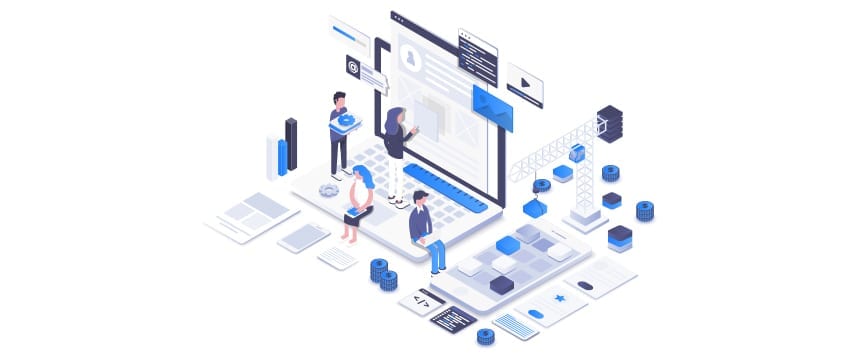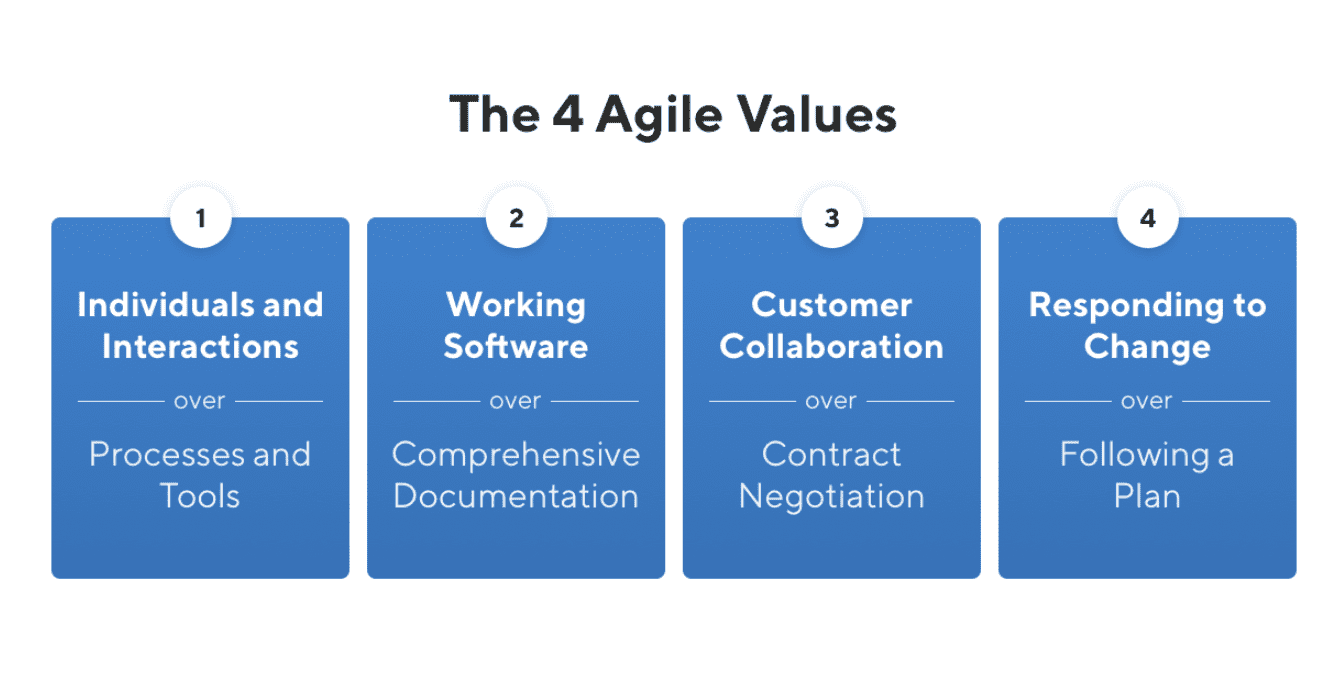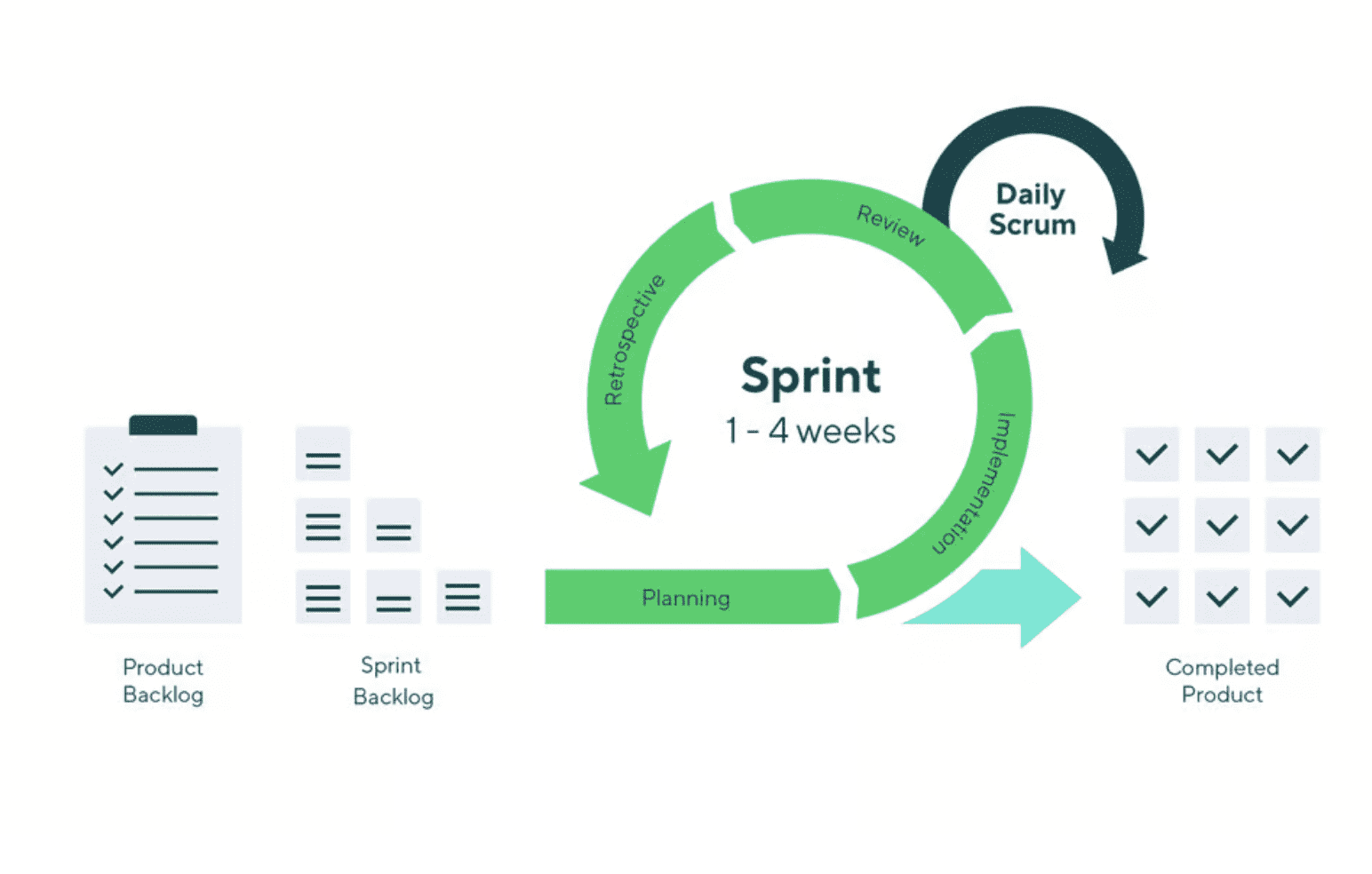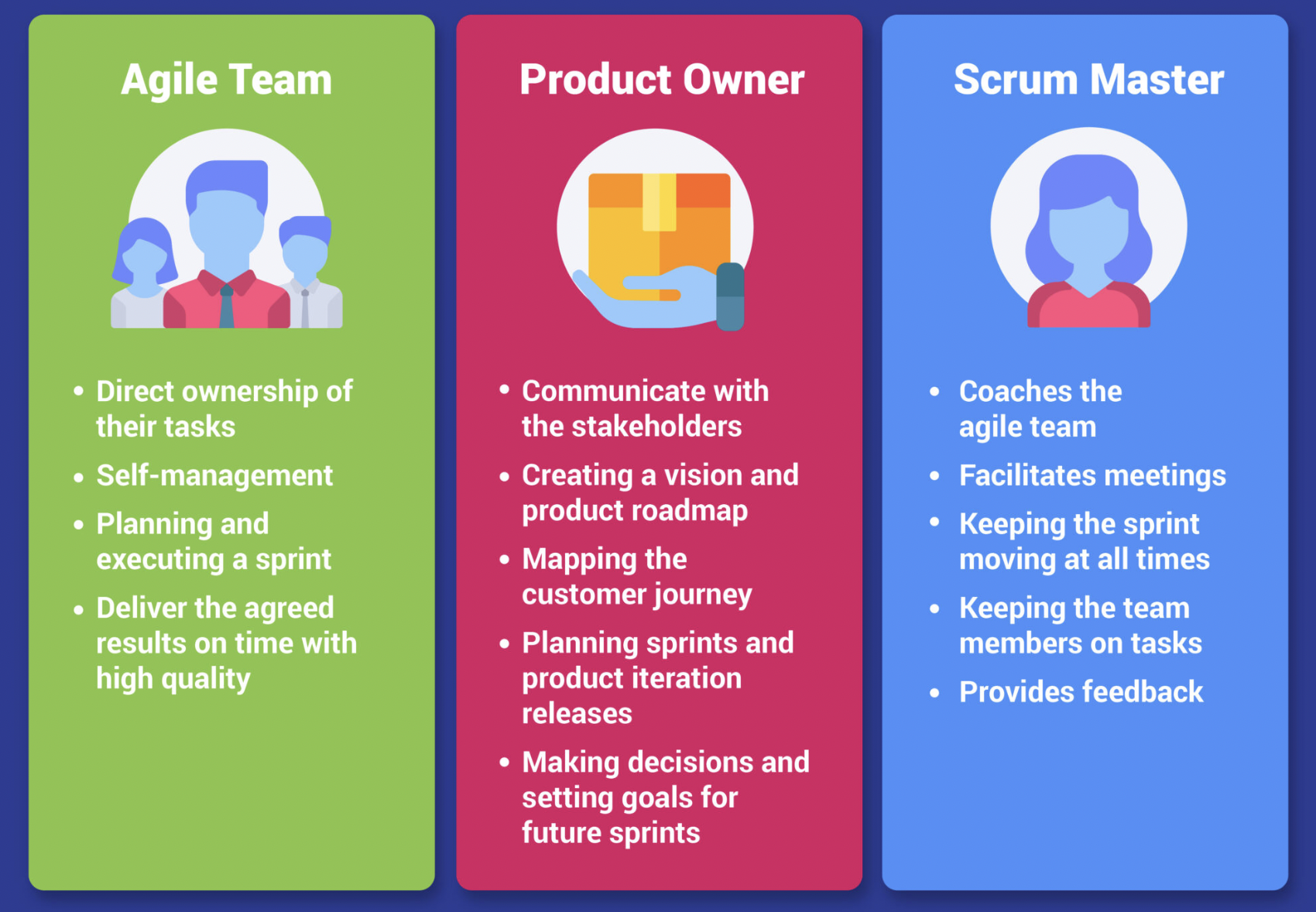Agile Framework For Mobile App Development

Mobile app development is an ever-evolving industry that requires a flexible and adaptive approach. To keep up with the rapidly changing market demands and stay ahead of the competition, development teams need to work efficiently and effectively. One of the best methods for mobile app development is Agile Framework.
The Agile Framework is an iterative and incremental approach to software development that emphasizes collaboration, flexibility, and continuous improvement. It has revolutionized the way software is developed and has become a preferred methodology for mobile apps due to its ability to respond to changing customer needs and market demands.
In this ultimate guide, we’ll explore everything you need to know about the Agile Framework and Agile project management. We’ll cover the Agile principles and values, the Agile project management process, popular Agile methodologies, and the benefits of using the Agile Framework for mobile app development. You’ll also learn more about the best practices for implementing Agile in mobile app development, common challenges that teams might face, and solutions to overcome them.
Whether you’re new to Agile or an experienced practitioner, this guide will equip you with the knowledge and tools you need to succeed in mobile app development.
Understanding the Agile Framework
The Agile Framework is a flexible and iterative approach to software development that emphasizes collaboration, flexibility, and continuous improvement. It enables development teams to deliver high-quality software faster and more efficiently while also adapting to changing customer needs and market demands.
The Agile Framework is based on four key values:
- Individuals and interactions over processes and tools: This value emphasizes the importance of people and communication in the software development process. It encourages teams to prioritize face-to-face communication and collaboration over rigid processes and tools.
- Working software over comprehensive documentation: This value focuses on delivering working software that meets customer needs over creating extensive documentation. In short, deliver software instead of spending too much time on tasks that don’t directly contribute to deliverables.
- Customer collaboration over contract negotiation: This encourages teams to collaborate with customers throughout the development process. Collaboration can help everyone get on the same page when it comes to identifying requirements, prioritizing tasks, and making changes as needed based on customer feedback.
- Responding to change over following a plan: Agile development is all about being flexible and adaptive to changing customer needs and market demands. It encourages teams to embrace change and to continuously improve their processes and software to meet changing requirements.


The Agile Framework is also based on twelve principles, which are outlined in the Agile Manifesto. These principles provide a foundation for the Agile Framework and guide teams in their approach to software development.
- Customer satisfaction through early and continuous software delivery
- Welcome changing requirements, even late in development
- Deliver working software frequently, with a preference for shorter timescales
- Collaboration between business stakeholders and developers throughout the project
- Build projects around motivated individuals and give them the support they need
- Use face-to-face communication as much as possible
- Working software is the primary measure of progress
- Sustainable development, with a focus on maintaining a constant pace
- Technical excellence and good design enhances agility
- Simplicity is essential, which is the art of maximizing the amount of work not done
- Self-organizing teams make the best use of individuals’ capabilities
- Regularly reflect on the team’s performance and make adjustments as necessary
The four key values and twelve principles of the Agile Framework will shape everything throughout the software development process.
The Agile Project Management Process
The Agile project management process is an iterative and incremental approach to software development that’s based on the principles of the Agile Framework. It enables development teams to deliver high-quality software faster and more efficiently—adapting to changing customer needs and market demands.
The Agile project management process typically consists of the following stages:
- Planning Stage: The team identifies the requirements and goals for the project and creates a plan for how to achieve them. This plan is typically broken down into smaller, more manageable tasks.
- Development Stage: Teams develop the software according to the plan. This step is typically handled in short iterations known as sprints, with each iteration resulting in a working piece of software.
- Testing Stage: The software must be tested to ensure that it meets the requirements and functions as expected. Testing is typically done throughout the development process, with each iteration being tested before moving on to the next.
- Review Stage: The Agile Framework emphasizes the importance the team reviews to identify areas for improvement. This review is typically done at the end of each iteration. The goal here is to continuously improve the process and the software.
The vast majority of what gets accomplished during Agile projects revolves around sprints and sprint planning. Sprints last for a few weeks, and teams aim to get as much work completed as possible during each sprint.


The Agile project management process is typically led by a product owner, who is responsible for defining the project goals and requirements, and prioritizing the work. The development team is responsible for developing, testing, and reviewing the software.
There are several popular Agile project management methodologies, including Scrum, Kanban, and Lean. In the next section, we’ll explore each of these methodologies in more detail.
Popular Agile Project Management Methodologies For Mobile App Development
Within the Agile Framework, there are several Agile project management methodologies that teams can use to deliver software. Every Agile project management methodology has strengths and weaknesses. It’s important for teams to choose the methodology that best fits their needs and goals.
It’s also worth noting that Agile project management methodologies are not the same as the Agile Framework. These methodologies are just more specific ways to implement the Agile Framework. Each method has its own set of practices, roles, and tools that are used to manage the software development process.
Here are a few examples of agile project management methodologies that are commonly used for creating mobile apps:
Scrum
Scrum is a popular Agile project management methodology that’s based on the principles of transparency, inspection, and adaptation. The framework is designed to help teams develop and deliver high-quality software in short iterations, called sprints. Scrum emphasizes the importance of collaboration, with daily stand-up meetings and regular retrospectives to identify areas for improvement.
Lean
The Lean Agile project management methodology focuses on minimizing waste, maximizing customer value, and continuous improvement. It’s structured to help teams identify and eliminate inefficiencies throughout the software development process. Lean management helps deliver value to the customer while emphasizing the importance of continuous improvement, with metrics to measure progress.
Kanban
Kanban is highly focused on principles associated with visualizing work, limiting work in progress, and managing flow. The methodology helps teams visualize and manage their work, and to improve the overall workflow throughout the project. Kanban also follows the importance of continuous improvement with retrospectives to identify where teams can get better.
Here’s an example of what a Kanban board looks like.


Benefits of Agile Framework for Mobile App Development
The Agile Framework provides a variety of benefits to mobile app development teams, including:
- Improved collaboration and communication
- Enhanced flexibility and adaptability
- Accelerated time-to-market
- Reduced risk of project failure
- Improved customer satisfaction
Agile methodologies emphasize team collaboration, customer involvement, and communication, resulting in a better understanding of project goals and requirements. This promotes flexibility and adaptability in software development, allowing teams to respond quickly to changing customer needs and market demands.
Agile methodologies also focus on delivering functional software in short iterations, resulting in a faster time-to-market and the ability to quickly incorporate feedback. This leads to a reduced risk of project failure and ensures that the software meets customer needs. Ultimately, Agile development places the customer at the center of the development process, resulting in software that is more likely to meet their needs and expectations, leading to increased customer satisfaction.
These benefits have made the Agile Framework the preferred methodology for mobile app development.
Implementing Agile in Mobile App Development
Using Agile in mobile app development requires a shift in mindset and a willingness to embrace change. Here are ten steps to help you implement the agile framework effectively:
- Clearly define the project goals and requirements of your mobile app project.
- Start small with a manageable project to learn Agile and adapt to the methodology.
- Build a cross-functional team that includes developers, designers, testers, and other stakeholders.
- Use Agile tools to implement your desired methodologies (like Scrum, Kanban, and Lean).
- Involve the customer in the development process to ensure their needs and expectations are met.
- Encourage communication and collaboration through frequent meetings with team members.
- Focus on delivering working software in short iterations.
- Continuously refine the backlog to ensure that it accurately reflects the project’s goals and requirements.
- Use metrics to measure progress and identify areas for improvement.
- Encourage your team to regularly reflect on their performance and determine how the next stages can be better than the previous ones.
By following these ten steps, you can effectively implement Agile in mobile app development and experience the benefits of the Agile Framework.
Common Pitfalls of Agile Implementation and How to Avoid Them
While Agile development offers many benefits, there are also several common pitfalls that teams may encounter when implementing Agile in mobile app development. Here are some of the top reasons why Agile teams fail:
- Lack of senior management support
- Lack of clarity around roles and responsibilities
- Poor communication
- Inadequate training
- Failure to adapt to change
To avoid these pitfalls, teams must prioritize getting buy-in from senior management, ensure clarity around each team member’s roles and responsibilities, and emphasize communication and face-to-face meetings. Additionally, adequate training is necessary to ensure team members are equipped with the necessary skills and knowledge to implement Agile effectively. Teams must also be prepared to adapt and make changes to their processes and practices to better align with the Agile methodology.
By being aware of these common pitfalls and taking steps to avoid them, development teams can effectively implement Agile in mobile app development and experience the benefits of the Agile Framework.
Roles in an Agile Team for Mobile App Development
Each team member has a specific role to play in the development process, and understanding these roles is essential to the success of an Agile project. Every Agile team has a product owner and a Scrum Master.


Depending on the size of your project and the Agile management method you’re using, your team may also include additional roles. Here are some of the most common roles we see for mobile development:
- Product Owner: The product owner is responsible for defining project goals and priorities, creating a product backlog, and ensuring that the development team has a clear understanding of customer requirements.
- Scrum Master: Responsible for ensuring that the team follows Agile principles and practices. They facilitate team meetings and remove obstacles that may hinder progress.
- Development Team: Developers create the software and deliver working increments of the product during each sprint.
- Stakeholders: Anyone who has an interest in the product, including customers, users, and other team members who may not be directly involved in development.
- Agile Coach: Experienced Agile practitioner who provides guidance and support to the development team and helps them implement Agile principles and practices effectively.
- UX Designer: Responsible for creating wireframes and user interface designs that meet customer needs and are intuitive and easy to use.
- Front-End Developer: Creates the user interface and user experience that the UX designer has designed.
- Back-End Developer: Responsible for creating the server-side code that enables the application to function and connect to a database.
- QA Engineer: Responsible for testing the application to ensure that it meets quality standards and is free from bugs.
- Technical Writer: Creates and handles all documentation that describes the application’s features, functions, and user guides.
Each role in an Agile team for mobile app development plays a critical part in ensuring that the project is successful. By working together and collaborating effectively, Agile teams can deliver high-quality software that meets customer needs and adapts to changing market demands.
Final Thoughts on the Agile Framework For Mobile App Development
Agile development is an effective framework for mobile apps that offers a wide range of benefits. This includes improved collaboration, enhanced flexibility, accelerated time-to-market, reduced risk of project failure, and improved customer satisfaction.
By implementing Agile in mobile app development, teams can deliver high-quality software that meets customer needs and adapts to changing market demands.
To successfully implement Agile in mobile app development, teams should follow the best practices that were covered in this guide. Examples include defining your project goals and requirements, building a cross-functional team, prioritizing communication and collaboration, and using Agile tools and methodologies.
You should also be aware of common pitfalls we discussed. By being aware of these challenges and taking steps to avoid them, development teams can effectively implement Agile in mobile app development and experience the benefits of the Agile Framework.